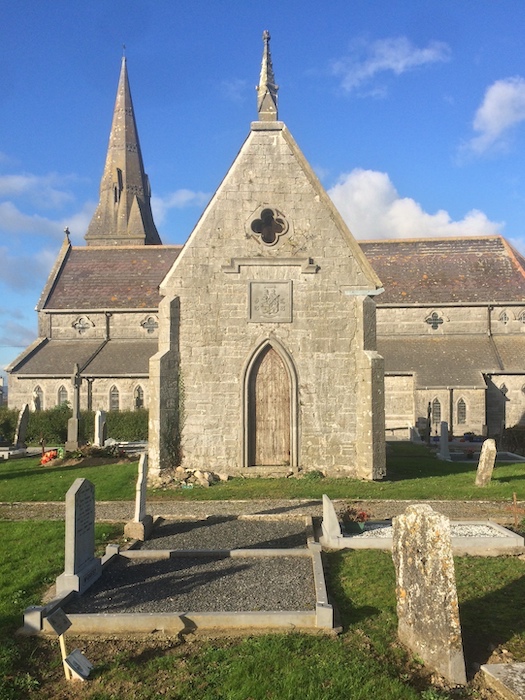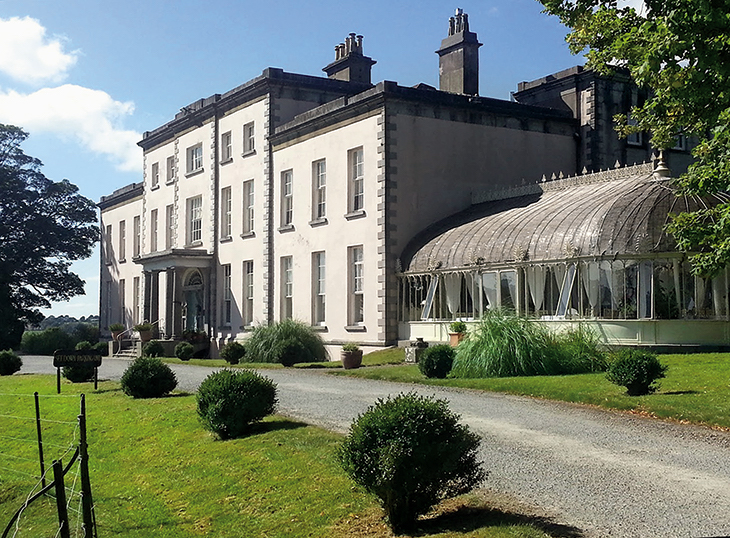The history of the Buildings of Ireland series unwittingly exposes the country’s often apathetic attitude towards its architectural heritage. Following the model provided by Pevsner’s Buildings of England, the first Irish volume – which covers north-west Ulster – appeared in 1979 and, after what might be described as a lull, a second in 1993. Another 12 years passed before the third was published in 2005, and it was 2013 before the appearance of the fourth. One came out last summer, a sixth this spring. So, over the course of approximately 40 years, around a third of the country has been covered, and by now the earlier works are desperately in need of revision.
This state of affairs is by no means the fault of the organisation behind the enterprise, the Buildings of Ireland Charitable Trust: it struggles to find authors and, just as importantly, funds. What the slow rate of production reflects is insufficient general interest in drawing up a full record of the country’s historic buildings, and a lack of support – not least from official bodies – for this necessary endeavour.
Just how necessary this is is amply demonstrated by the most recent additions to the series. The first, Andrew Tierney’s guide to central Leinster, covers the counties of Kildare, Laois and Offaly – the second and third being the earliest parts of the country to be shired (in the 16th century, when they were called Queen’s and King’s County respectively). While the delights of Kildare, being close to the capital, are well-enough known, those of the other two remain relatively unfamiliar aside from a handful of much-visited sites, such as the early medieval monastic complex at Clonmacnoise.
Temple Finghín & McCarthy’s Tower, Clonmacnoise, 12th century. Photo: Andrew Tierney; courtesy Yale University Press

Tierney rightly gives those buildings generous coverage, but Clonmacnoise has already been the subject of extensive analysis and discussion. It’s more fascinating to read about places that are underexplored, such as the County Offaly villages of Geashill and Rahan, the former laid out in the 19th century by a local landlord, the latter containing a small church incorporating features from the 12th to 20th centuries. Like any good gazetteer, almost every page yields at least one curiosity, whether it be the monumental pre-Catholic Emancipation mausoleum to the Grace family in Arles, County Laois, or an 18th-century brick eyecatcher called Pigeon House in Nurney, County Kildare. Both are to be found in hamlets, well away from major transport arteries, and are therefore almost unknown outside their immediate area.
These buildings are described but as a rule not rated because the Irish Pevsners, following the example of their English equivalent, engage in factual reportage. Often even the condition of a building is not explicitly stated. Inside a medium-sized country house outside Portarlington, County Laois, Tierney remarks that ‘the room above, with alternating niches in the N wall, has collapsed’. From which one may deduce the place is in pitiful condition.
Grace mausoleum, Arles, County Laois, erected in 1818. Photo: the author

Likewise, Pevsner house style expects authors to eschew personal opinion, although it occasionally seeps out, as when Tierney observes of a three-storey hotel block added to Carton, County Kildare (former home of the Dukes of Leinster) that it is ‘an architecture of compromise, and only achieving a convincing statement of any one style or era in its parts’. On the other hand, in his introduction to the volume, he allows himself unequivocal lamentation not just over the loss of some significant buildings in recent decades, but more often the ‘ill-judged refurbishment or post-crash abandonment and vandalism’ of many properties, as well as ‘the endless assault on sash windows, particularly notable in towns and villages’.
Similar remarks are made by Frank Keohane in his introduction to the volume covering Cork city and county. This really is a commendable endeavour. Cork is the largest county in Ireland, and its city second only to Dublin (although Corkonians like to proclaim that theirs is the real capital). To explore the two thoroughly is a mammoth undertaking, and it comes as no surprise that the author embarked on his task back in 2008. There have been some tragic casualties since then, none greater than Vernon Mount, badly damaged in a suspected arson attack in 2016. The needless destruction of this late 18th-century villa, with its unique painted interiors, exposes the inadequacies of Ireland’s legislation regarding the protection of built heritage.
Like Tierney, Keohane does not dwell on the matter but leads the reader up and down the hilly streets of the city of Cork before venturing beyond its boundaries. Again, the great delight lies in discovery; even those who think themselves familiar with their locale will learn something new. Cork, like other Irish coastal settlements, was founded by the Vikings and it soon became an important trading centre. Built on a series of islands, the city derives its name from the Irish corcach, which means marsh, and the main thoroughfare, St Patrick’s Street, twists and winds because it sits on what was formerly the centre channel of the river Lee. This history gives the city its distinctive character, one currently under threat from a state scheme to build high concrete walls along the quays because Cork, like Venice, has always been prone to flooding.
Longueville House, Mallow, Co Cork, built in 1720. Photo: Frank Keohane; courtesy Yale University Press

Keohane reveals the wealth of historic interiors that survive from the city’s Georgian period, much of it concealed behind unimpressive facades. The core of what is today known as the Mercy Hospital, for example, was originally constructed in the late 1760s as a residence for the city’s mayor, and still contains spaces such as a double-height drawing room with musician’s gallery over the entrance and rococo plasterwork on the ceiling. This writer plans to feign sickness next time he is in the vicinity of the building so as to gain access.
In fact a plan has been hatched, as soon as the present pandemic allows, to take Keohane’s book and embark on an extensive journey of exploration. He certainly provides abundant temptations: Castle Freke, a vast neo-gothic pile built for the Barons Carbery, which was largely dismantled in 1952 but is now being reassembled by a member of the family; the 15th-century castle Carrigaphooca; or what sounds like a fascinating Ruskinian gothic ruin named Velvetstown House. It is hard to imagine better travelling companions than this pair of works. The only regret is that there are not more of them to bring along.
The Buildings of Ireland: Central Leinster by Andrew Tierney and The Buildings of Ireland: Cork City and County by Frank Keohane are published by Yale University Press.
From the July/August issue of Apollo. Preview and subscribe here.



